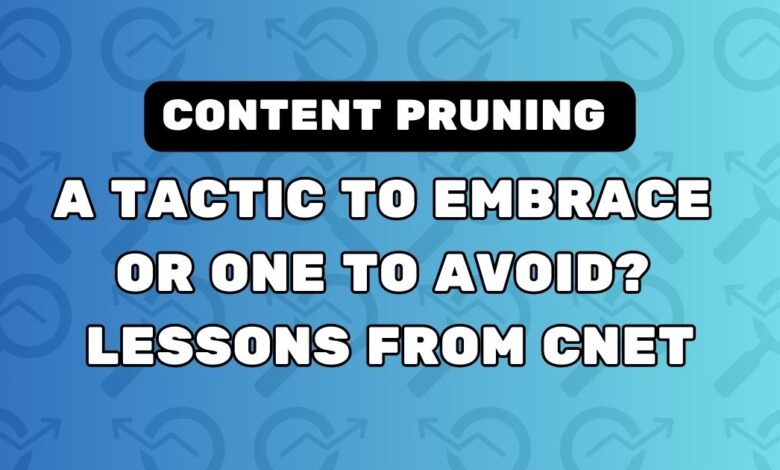Content Pruning: A Tactic To Embrace Or One To Avoid? Lessons From CNET

Veteran SEO, Barry Adams, shares some sage advice on content pruning in the Slack community NewsSEO, stating that it’s a very context-dependant activity:
“Many SEOs have been proclaiming the virtues of content pruning for many years, with some anecdotal evidence to back up its success, but there have been plenty of instances where the evidence was very thin, and even where content pruning caused disaster. So it’s not an ‘industry-wide best practice.’ It’s just another tool in a very broad arsenal, and a tool that needs to be applied only when it is the right tool for the job. And that is very context-dependent.”
Ulrik Baltzer, SEO Manager at TV 2 Danmark, believes content consolidation is preferential to content pruning:
“Personally, I think [CNET] could stick to 1+2 in their content pruning process without deprecating [content]. By consolidating articles without deprecating unnecessarily, they could retain topical authority and focus their editorial efforts on fewer and better articles going forward. It’s like consolidating ten different stories about the history of CPUs into one mother article or something along those lines. But it depends on your perspective, I guess.”
But perhaps the best advice I’ve seen, in relation to following SEO best practices, actually came from a job posting I saw two months ago on LinkedIn:
“Don’t accept theories at face value, and enjoy testing to prove the effectiveness of tactics.”
Test, test, and test again!
How to prune your content in 3 steps
1. Audit your site to find struggling content
Start off by auditing your content. Determine which pieces are struggling based on performance drops in GA4 (over time) across:
- Sessions
- Engaged sessions
- Keywords
- Rankings
- Backlinks
- Shares
- Average engagement time per session
- Conversions
You should also do a site search on Google for mentions of old dates or news topics in your content.
This content will likely need to be updated or pruned.
2. Identify your quick win updates
Zero in on content that has experienced recent drops. If this content is
- Still bringing in traffic via channels beyond search
- Showing strong metrics beyond rankings (ie. shares, engagement time)
- Ranking on the bottom of page one, or top of page 2
Then it is showing signs of life and potential – meaning audiences and search engines are still deeming it to be relevant.
This is content you ideally want to be updating and optimizing.
3. Assign a pruning action to the rest of your content
For content showing little to no performance, you need to make a decision on whether to:
- Consolidate/merge it with another piece of related content
- Redirect it to a newer, more relevant piece of content
- Remove it entirely from your site – if there really is no value and it can’t be upcycled or archived
- De-index it so it can’t be crawled by search engines
Wrapping up
When you set out to prune your content, it’s important to ask yourself a few questions.
Is your content really relevant to your target audience? In pursuing growth, be careful to maintain sight of your core audience in favor of publishing content about anything and everything. Stay true to your identity and your audience.
Is your content helping you achieve a goal? Make sure you can tie every piece of content to a specific goal (ie. to rank, attract links, drive conversions). Otherwise you’re just creating content for content’s sake.
Maintain your content well, and you’ll reap the rewards.


